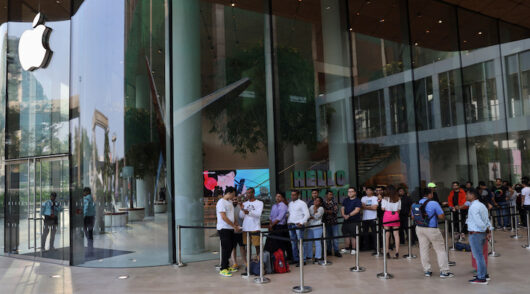Chinese tourists are travelling more but spending less on shopping, says a new report from global consulting firm Oliver Wyman.
The number of trips by outbound Mainland Chinese travellers is expected to reach 150 million this year. But while average trip spend is on the rise (up 3.5 per cent 2015-2016), shopping spend declined both in absolute and relative terms, to 33 per cent of trip spend in the same period, according to the report, ‘Prepare for Turbulence: The Chinese Traveler of Today and Tomorrow’.
Shopping has dropped from the second biggest motivation for travelling to third, behind sightseeing and recreation & entertainment. The decline was mainly driven by decreased shopping for resale – ‘daigou’ – which fell from 8 per cent to 3 per cent year-over-year, the report concludes.
“Chinese Travellers continue to shift their spending towards more meaningful experiences such as exquisite dining, extraordinary cultural journeys and even adventurous sports,” said Hunter Williams, Oliver Wyman partner and author of the report.
“At the same time, cross-border e-commerce has grown rapidly, overseas travel has democratised, and there is greater availability of products at home, meaning there is less need for buying overseas for resale”
Travellers who rank shopping as the main reason to travel are generally from lower income brackets than those who rank shopping as the second and third motivations to travel. Therefore, the most “intent shoppers” are not the biggest spenders in either shopping or total travel spending, said Williams.
For example retail spend as proportion of overall trip spend in the United Kingdom went down from 42 per cent to 33 per cent despite the weakness of the pound following Brexit. A particular fall was seen in daigou spend, which dropped from RMB1800 to RMB1000 per person from 2015-2016. Similarly, retail spend in the US dropped from 41 per cent to 28 per cent with only 5 per cent of respondents ranking shopping as number one reason to go to the country.
The report reveals the major shifts in the tastes of Chinese travellers, who are becoming more independent as they become more sophisticated. “Cookie cutter” holidays have greatly declined in popularity as a result – fewer than one in 40 holidays were mostly planned by travel agents in 2016 versus more than one in seven in 2015.
They are also staying longer in distant locations, travelling more with their families and even spending less on shopping. They now travel more with immediate family and especially children, resulting in growth in average group size from 2.9 to 3.1 travellers per group.
Shorter trips
In terms of travel duration, Chinese travellers are making shorter trips to Asia and significantly longer trips to long-haul destinations. Hong Kong remains the most popular destination despite seeing a 3 per cent year-over-year drop in Chinese visitors in 2016, with the city appearing to be poised for a comeback with nearly seven times as many respondents saying their impression of the city had improved (55 per cent) rather than worsened (8 per cent), and the majority perceiving it as “good value”.
South Korea has slipped from its position as the top destination, seeing Chinese visitor numbers decrease 3 per cent year-over-year in 2016 and a slump in popularity with travellers planning to visit falling from 31 per cent in 2015 to 17 per cent last year. In contrast, Japan has continued to rise, again being the fastest growing destination and now also the most desired, with 4 per cent year-over-year growth and 29 per cent of respondents planning to visit in 2017.
Interestingly, the report also reveals that twice as many trips were made domestically last year compared to 2015, with over 90 per cent of respondents making at least one domestic tourism trip in the past 12 months. On the consumption front, they are much less interested in shopping when travelling domestically and also more price conscious, with 47 per cent of respondents seeking value/price compared with 40 per cent for overseas destinations.
With long-haul destinations becoming more popular among Chinese tourists, Oliver Wyman expects that a greater proportion of spend will be allocated to accommodation, dining and entertainment, while shopping spend as a percentage of overall travel spend is likely to continue to decline moving forward.






